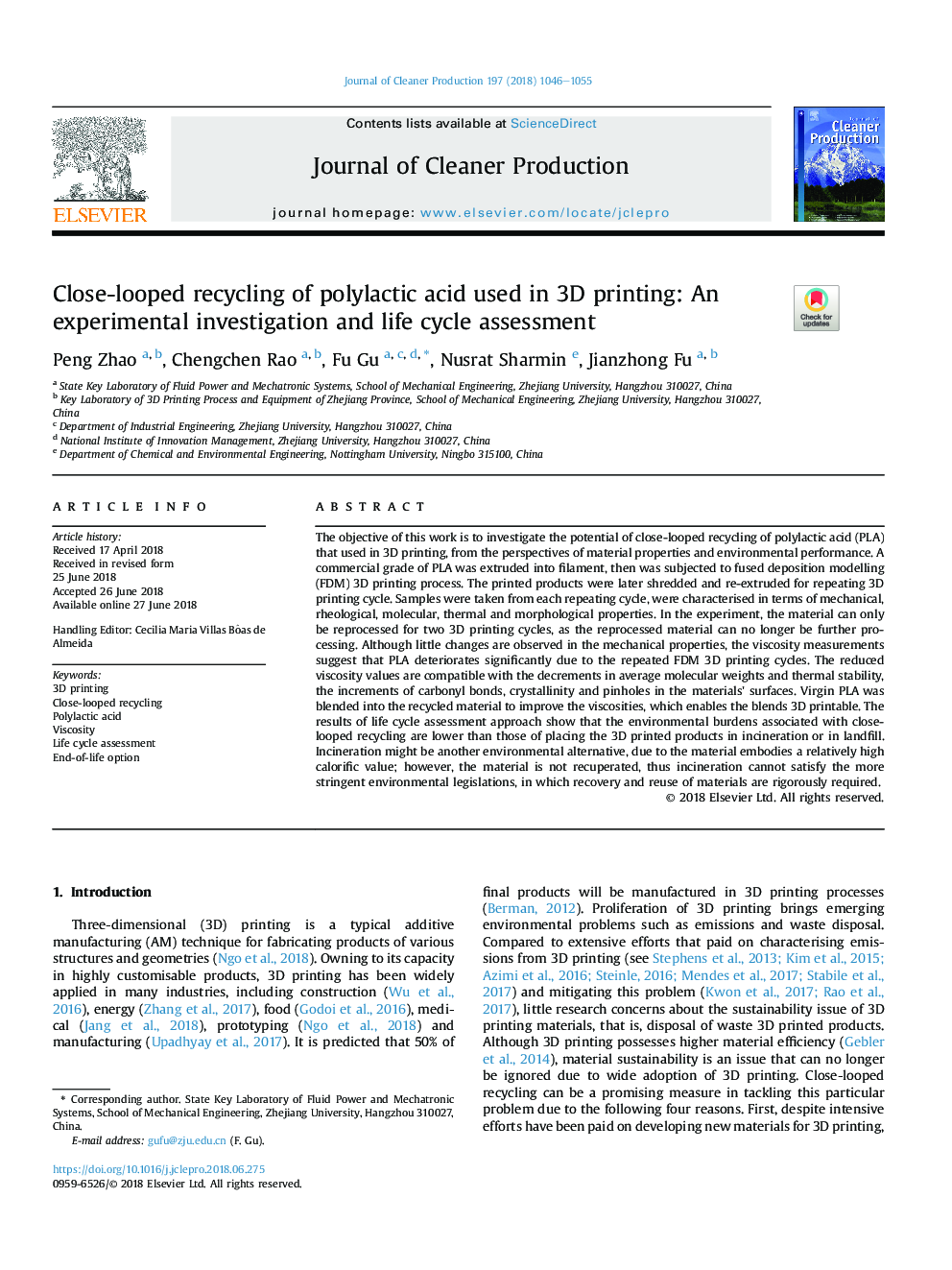| کد مقاله | کد نشریه | سال انتشار | مقاله انگلیسی | نسخه تمام متن |
|---|---|---|---|---|
| 8094228 | 1522056 | 2018 | 10 صفحه PDF | دانلود رایگان |
عنوان انگلیسی مقاله ISI
Close-looped recycling of polylactic acid used in 3D printing: An experimental investigation and life cycle assessment
ترجمه فارسی عنوان
بازیافت بسته شدن حلال پلی اتیلن اسید مورد استفاده در چاپ سه بعدی: بررسی تجربی و ارزیابی چرخه زندگی
دانلود مقاله + سفارش ترجمه
دانلود مقاله ISI انگلیسی
رایگان برای ایرانیان
کلمات کلیدی
موضوعات مرتبط
مهندسی و علوم پایه
مهندسی انرژی
انرژی های تجدید پذیر، توسعه پایدار و محیط زیست
چکیده انگلیسی
The objective of this work is to investigate the potential of close-looped recycling of polylactic acid (PLA) that used in 3D printing, from the perspectives of material properties and environmental performance. A commercial grade of PLA was extruded into filament, then was subjected to fused deposition modelling (FDM) 3D printing process. The printed products were later shredded and re-extruded for repeating 3D printing cycle. Samples were taken from each repeating cycle, were characterised in terms of mechanical, rheological, molecular, thermal and morphological properties. In the experiment, the material can only be reprocessed for two 3D printing cycles, as the reprocessed material can no longer be further processing. Although little changes are observed in the mechanical properties, the viscosity measurements suggest that PLA deteriorates significantly due to the repeated FDM 3D printing cycles. The reduced viscosity values are compatible with the decrements in average molecular weights and thermal stability, the increments of carbonyl bonds, crystallinity and pinholes in the materials' surfaces. Virgin PLA was blended into the recycled material to improve the viscosities, which enables the blends 3D printable. The results of life cycle assessment approach show that the environmental burdens associated with close-looped recycling are lower than those of placing the 3D printed products in incineration or in landfill. Incineration might be another environmental alternative, due to the material embodies a relatively high calorific value; however, the material is not recuperated, thus incineration cannot satisfy the more stringent environmental legislations, in which recovery and reuse of materials are rigorously required.
ناشر
Database: Elsevier - ScienceDirect (ساینس دایرکت)
Journal: Journal of Cleaner Production - Volume 197, Part 1, 1 October 2018, Pages 1046-1055
Journal: Journal of Cleaner Production - Volume 197, Part 1, 1 October 2018, Pages 1046-1055
نویسندگان
Peng Zhao, Chengchen Rao, Fu Gu, Nusrat Sharmin, Jianzhong Fu,
